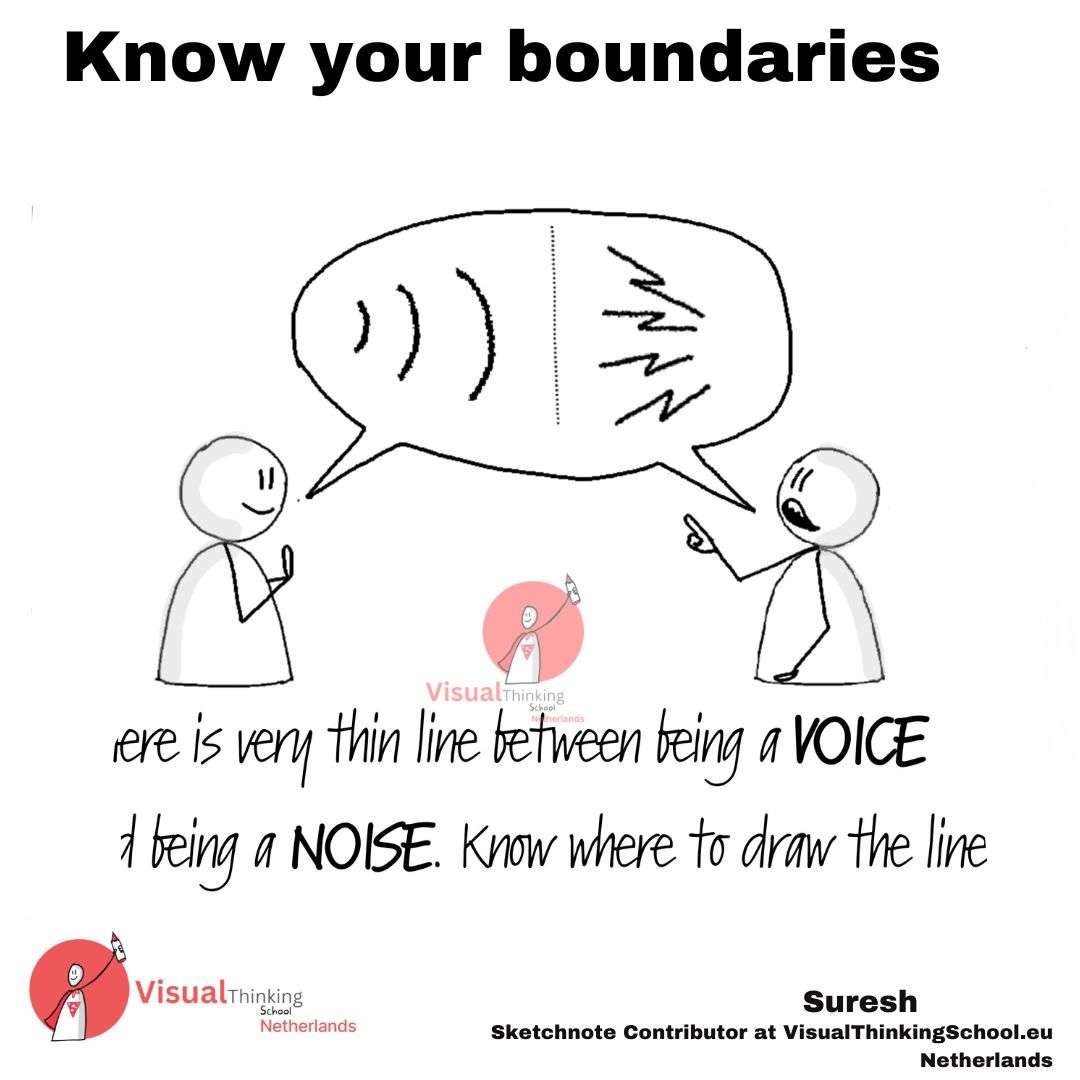

Communication is a powerful tool, essential for building relationships and creating understanding. However, it’s important to recognize that there’s a thin line between being a voice that contributes meaningfully and being a noise that disrupts. This blog will delve into the concept of knowing your boundaries in communication, why it matters, and how to ensure that your voice is heard without becoming overwhelming noise.
Defining ‘Voice’ and ‘Noise’
A ‘voice’ represents meaningful, constructive, and considerate communication. It involves speaking with purpose, listening actively, and respecting others’ perspectives. On the other hand, ‘noise’ is disruptive, inconsiderate, and often fails to add value to the conversation. It can drown out other voices, create misunderstandings, and lead to conflict.
The Impact of Communication Styles
Your communication style can determine whether you’re perceived as a voice or a noise. Assertive communication is usually seen as a voice—it’s clear, direct, and respectful. Aggressive or overly passive communication often turns into noise, as it either overpowers others or fails to convey the intended message effectively.
Fostering Healthy Relationships
Respecting boundaries in communication is crucial for maintaining healthy relationships. Whether it’s with friends, family, or colleagues, knowing when to speak and when to listen ensures that interactions are balanced and respectful. It helps build trust and mutual respect, which are foundational for any strong relationship.
Enhancing Workplace Dynamics
In a professional setting, being a voice rather than a noise can enhance team dynamics and productivity. Clear and respectful communication leads to better collaboration, fewer misunderstandings, and a more positive work environment. Conversely, noise can create tension, reduce morale, and hinder team performance.
Active Listening
Active listening is a key skill for recognizing and respecting boundaries. It involves fully focusing on the speaker, understanding their message, and responding thoughtfully. This practice shows respect for the other person’s viewpoint and helps ensure that your responses are relevant and constructive.
Being Mindful of Your Tone and Volume
The way you say something can be just as important as what you say. Being mindful of your tone and volume helps ensure that your message is received as intended. A calm, measured tone conveys respect and consideration, while a loud or harsh tone can be perceived as aggressive and disruptive.
Timing Your Contributions
Knowing when to speak up and when to stay silent is crucial. Consider the context and the flow of the conversation. Interrupting or dominating the conversation can turn your voice into noise. Wait for appropriate pauses and contribute in a way that adds value to the discussion.
Clarify Your Intentions
Before speaking, clarify your intentions. Ask yourself if what you’re about to say is necessary, relevant, and respectful. This self-check can help ensure that your contributions are meaningful and constructive.
Seek Feedback
Seeking feedback from others can help you gauge whether you’re being a voice or a noise. Ask trusted friends, family members, or colleagues for their honest opinions about your communication style. Be open to their insights and willing to make adjustments.
Practice Empathy
Empathy involves understanding and sharing the feelings of others. Practicing empathy in communication helps you connect with others on a deeper level and respond in ways that are considerate and respectful. It can transform your interactions and ensure that your voice is always heard and appreciated.

Knowing your boundaries in communication is essential for being a voice that contributes positively rather than a noise that disrupts. By understanding the difference between voice and noise, recognizing the importance of respecting boundaries, and implementing practical tips for effective communication, you can enhance your relationships and create more meaningful interactions. Remember, there’s a very thin line between being a voice and being a noise. Knowing where to draw the line makes all the difference.
We conduct online and in-person certification trainings on our Trade Marked Training on Business Sketchnotes ™.
We have an open challenge in our trainings : If you can not draw after our 9 hours of trainings, we will close our trainings FOR EVER !! ..and we are still waiting for that one person even after training more than 38000 professionals.
You can also join our whatsapp community to learn from those who have attended our trainings

We trained more than 38000 professional and gave corporate trainings in more than 65+ top notch companies

Check Our Trainings